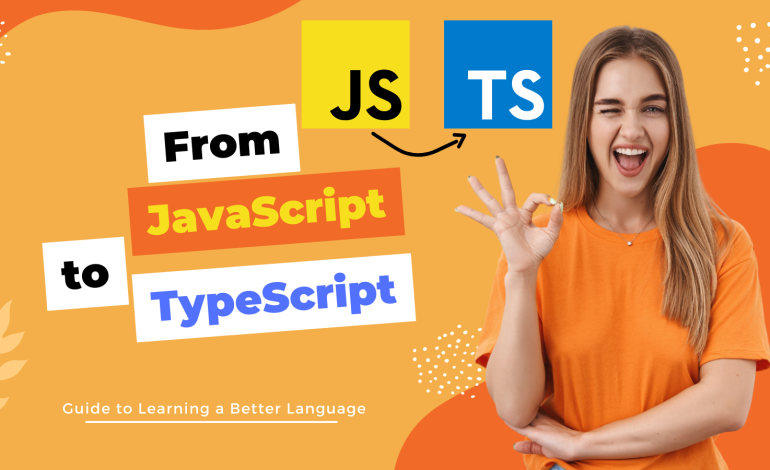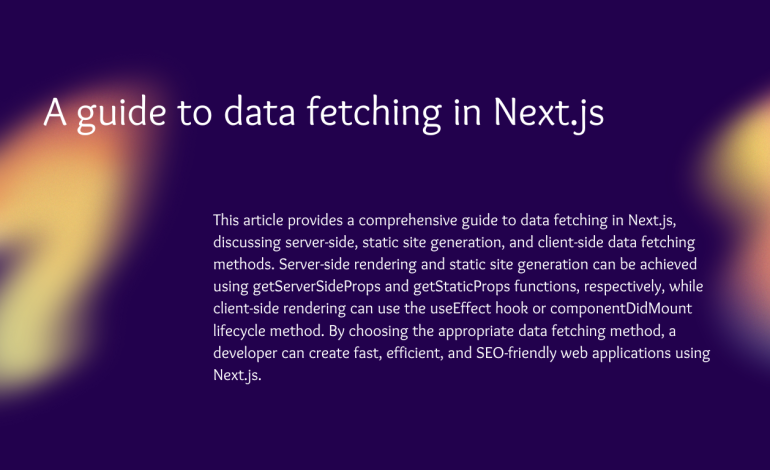From JavaScript to TypeScript: A Beginner’s Guide to Learning a Better Language

If you are a web developer who uses JavaScript, you might have heard of TypeScript, a superset of JavaScript that adds static typing and other features to the language. TypeScript is becoming more popular among developers who want to write more robust and maintainable code and avoid common errors and bugs arising from JavaScript’s dynamic and flexible nature.
But what is TypeScript exactly, and how can you learn it? In this blog post, we will give you an overview of TypeScript’s main features and benefits, and provide some resources and tips to help you get started with this better language.
Outline
- Introduction
- What is TypeScript?
- Why use TypeScript?
- TypeScript Features
- Learning TypeScript
- Benefits of Learning TypeScript
- How to Learn TypeScript
- Conclusion
Introduction
JavaScript is one of the most popular programming languages, and for good reason. It’s easy to learn, versatile, and widely used in web development. However, while JavaScript is powerful, it’s not perfect. That’s where TypeScript comes in. TypeScript is a superset of JavaScript that adds features to help developers write better code, catch errors, and make debugging easier. In this article, we’ll explore the differences between these two programming languages and give you a beginner’s guide to learning TypeScript.
What is TypeScript?
TypeScript is a superset of JavaScript that allows developers to write code that’s easier to manage, maintain, and debug. TypeScript adds features to JavaScript that make it more like a traditional programming language, such as static typing, classes, and interfaces. Using TypeScript allows developers to catch errors during development rather than runtime, saving time and reducing bugs.
Why use TypeScript?
There are numerous benefits of TypeScript over JavaScript, some of which include:
- Improved reliability: By using static typing, you can avoid common errors such as typos, undefined variables, or incorrect property access that can cause your program to crash or behave unexpectedly. TypeScript also supports strict null checks, preventing you from unintentionally assigning or using null or undefined values.
- Enhanced productivity: By using TypeScript’s type system, you can benefit from better code completion, documentation, and refactoring tools that can help you write code faster and easier. You can also use TypeScript’s compiler options and linting rules to enforce consistent coding styles and best practices across your project.
- Easier scalability: By using TypeScript’s classes, interfaces, and modules, you can structure your code in a more modular and maintainable way that can support larger and more complex applications. You can also use TypeScript’s generics and decorators to write more flexible and reusable code that can handle different scenarios and requirements.
- Seamless compatibility: Since TypeScript is a superset of JavaScript, you can use any existing JavaScript libraries or frameworks in your TypeScript project without any issues. You can also compile your TypeScript code to plain JavaScript that can run on any browser or platform that supports JavaScript.
TypeScript Features
TypeScript includes many features that are not available in pure JavaScript. Some of these features include:
-
- Static Typing – helps catch errors before runtime, provides better code completion and code navigation
- Classes and Interfaces – allows developers to write object-oriented code, making it easier to organize and manage complex codebases
- Modules – enables better code organization and reuse
- Enums – a set of named constants that makes code more readable and maintainable
- Generics – allows developers to write more flexible and reusable code
Learning TypeScript
To learn TypeScript, you’ll need a basic understanding of JavaScript. TypeScript builds on JavaScript, so if you know how to write JavaScript code, you’ll be able to pick up TypeScript easily. There are many resources available online for learning TypeScript, including courses, tutorials, and documentation. Some popular resources include the official TypeScript documentation, Udemy courses, and YouTube tutorials.
Benefits of Learning TypeScript
There are many benefits to learning TypeScript. For one, TypeScript makes it easier to write and maintain code. By catching errors at development time, developers can spend less time debugging and more time writing code. Additionally, TypeScript allows developers to write more organized and manageable code, which can lead to faster development times and less code bloat. Finally, learning TypeScript can open up more job opportunities, as many companies are switching to TypeScript for web development.
How to learn TypeScript?
- If you want to learn TypeScript, here are some steps and resources that can help you:
- Install TypeScript: To use TypeScript, install it on your machine using Node.js and npm. You can follow the official installation guide here
- Learn the basics: To get familiar with TypeScript’s syntax and features, you can read the official documentation here
- Practice with examples: To practice your TypeScript skills, you can use the online playground here
- You can also learn the latest about TypeScript on its blog.
- Build a project: To apply your TypeScript knowledge to a real-world project, choose a JavaScript framework that supports TypeScript, such as React, Angular, or Vue. You can find some guides and examples here
Conclusion
TypeScript is a better language than JavaScript for web development because it offers more reliability, productivity, scalability, and compatibility. If you want to learn TypeScript, follow the steps and resources we provided in this blog post. We hope this guide helps you start with TypeScript and enjoy its benefits.
And there you have it, your beginner’s guide to learning TypeScript as a better alternative to JavaScript. We hope this article has been helpful in getting you started on your TypeScript journey.
If you’re interested in learning more about programming and web development, we recommend checking out the bonus articles we’ve suggested below.


